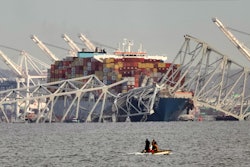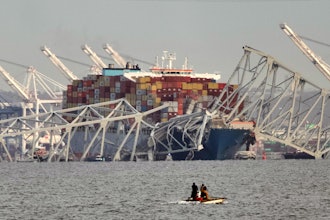The U.S. has experienced a wide variety of extreme weather conditions over the last few years, raising awareness in the workplace about weather safety preparedness. This article will provide tips and informational resources to help facilities prepare for tornadoes, floods, extreme heat, extreme cold, and other severe weather conditions.
Tornadoes
The Occupational Safety & Health Administration’s (OSHA) guidelines for tornado preparedness and response start with a documented plan. First, employers should identify appropriate shelter locations, ideally underground or in interior spaces away from exterior walls, doors, and windows.
Putting response procedures in place is the next step, including a system for identifying people in the building, testing emergency alarm systems, and designating specific employees to plan procedures.
Building awareness of the response plan and conducting periodic training are also essential for safety in the event of a tornado. This will keep employees alert, while providing new employees the opportunity to learn.
Employers should also make sure emergency supply kits are kept in shelter locations, including water, food, and first aid kits.
Floods
Employers should determine whether their facility is in an area vulnerable to flooding. If it is, create a preparedness plan to facilitate a safe evacuation in the event of a flood. Components of this plan, as outlined by OSHA, include:
- Identifying conditions that will cause the plan to be executed
- Creating a clear chain of command
- Identifying emergency functions and assigning responsibility to employees to carry them out
- Documenting detailed evacuation procedures
- Documenting procedures for accounting for all employees and visitors
- Reviewing the plan with the staff on a regular basis
It is extremely important for employees to be aware of the risks of a flooded environment. In particular, employers should raise awareness that water may be contaminated with dangerous chemicals and bacteria. Flooded areas and areas that could carry electrical currents should be avoided when driving or walking.
Heat
Extreme heat can cause a variety of risks to worker health and safety, including heat exhaustion, heat stroke, and loss of concentration that may lead to accidents and injuries.
Awareness is key to preparedness for hot weather. Educate workers on recognizing the signs of heat stress in themselves and co-workers. When symptoms are identified early, corrective action can be taken, reducing the risk of serious illness or injury. Common signs of heat stress include sweating, muscle cramps, dizziness, and nausea.
Employers can reduce exposure to heat stress problems through a number of steps, as recommended by OSHA. Among the most important are providing water and other hydrating liquids, making sure interior areas are well ventilated, using portable or structural air conditioning in high-heat areas, and providing longer and more frequent breaks inside or in shaded areas.
Also, outfitting workers with cooling ice vests, and water-cooled uniforms can be effective in combatting heat stress and related conditions. This is important for employees in the construction industry and other outdoor jobs.
Cold
OSHA recommends four high-level initiatives for cold-related workplace preparedness:
- Train workers to recognize and respond to cold stress
- Provide engineering controls to combat winter conditions, such as radiant heaters and lifts to remove rooftop ice and snow
- Implement safe winter work practices, including limiting exposure, providing hot beverages, and monitoring storm conditions
- Provide protective clothing with warmth-providing clothing, including coats, gloves, and rubber boots
Proper snow removal procedures also help employers maintain an increased level of safety in and around the facility. Snow should not be allowed to accumulate on roofs and workers should be fully trained in the use of snow removal equipment. Proper harnesses and safety equipment should be worn by workers removing snow on rooftops or in other elevated locations.
Other Extreme Weather
Develop preparedness plans for businesses located in areas vulnerable to hurricanes, sand storms, or mudslides specific to these types of weather events. While such extreme weather may rarely occur, maximizing the potential for a safe outcome is crucial on a business’ ability to respond.
OSHA’s “Planning and Responding to Workplace Emergencies” contains general guidelines for businesses to create or improve a response plan for weather conditions specific to their location. The basic elements of preparedness include: planning, establishing a chain of command, training employees, designating emergency response teams, organizing communication, and providing first aid and medical assistance.
By regularly conducting drills, posting safety information in high-traffic areas of the facility, and reinforcing safety as a high priority every day, your response plans will increase safety and reduce the risk of injury and illness.
Extreme weather risks can be reduced with the proper preparedness that includes planning, training, and awareness. Stay informed of weather hazards in your area with OSHA’s heat app, NOAA weather radio, the National Weather Service app, and text messages from FEMA.
Stefan Trask is a Web Content Editor at Northern Safety. Northern Safety specializes in industrial safety equipment and personal safety supplies that protect workers across the nation.























